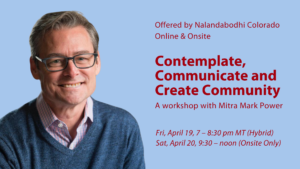The following post, “Heretic Buddhists” by Mitra Karl Brunnholzl, is part of a series by Nalandabodhi Mitras on Western Buddhism.
Are we in touch with our rebel spirit, always questioning and testing? Can we take our “no fear” approach too far? Or by rigidly holding to the “right” rules and rituals, are we actually losing spiritual ground and just shoring up the ego? Is it possible to cut ourselves off from our own clarity and wisdom, all the while thinking we’re playing it safe?
The nonconformist, revolutionary spirit is found in many great historical teachers in all the Buddhist traditions.
If you’ve read even a little about the life of the Buddha—or seen the movie—you know he wasn’t just a navel-gazing holy man detached from the cares of a suffering world. He was passionate about discovering the truth about life and his existence as a human being. That passion led him to break away from the established religious doctrines of his time and, after his awakening, to found a community based on egalitarian principles.
In the Buddha’s community, for example, the caste system was thrown out—untouchables and brahmins were equal aspirants on the path to enlightenment. That may not sound shocking to you now, but ask yourself: would you dare to seat the Pope or the Dalai Lama next to a homeless person at your dinner party?
Spiritual heretics
The nonconformist, revolutionary spirit is found in many great historical teachers in all the Buddhist traditions. You may not recognize the foreign sounding names or the issues that provoked them, but you can appreciate their courage and commitment to honesty and truth, in the face of recrimination, rejection, and even retribution. These “heretics” included brilliant scholars and meditators, like Nagarjuna. Although he eventually came to be regarded as a “second buddha,” his teachings on emptiness challenged the status quo in certain circles. To discredit him and paint him as a demon, some other Buddhists even invented negative prophecies about him and put them in the scriptures.
Then there was Gampopa, a revered figure in the Kagyu lineage of Tibetan Buddhism. Because he said that the Buddha taught “mahamudra” (one of the most advanced meditations) in his public discourses and even beginners could practice it and attain realization, he got a lot of flak from everyone at the time. The list goes on and includes figures like the 8th Karmapa and the 5th Dalai Lama. Whether they dared to question the authority of their tradition, departed from the established views of the day, or refused to play partisan spiritual politics, they were seen for a time as heretics, not as game players.

Karl Brunnholzl is the prolific author and translator of several volumes on Indian and Tibetan Buddhism. A physician extensively trained in Buddhist study and practice, he supervises the Nalandabodhi Path of Study courses, teaches at Nitartha Institute and throughout North America and Europe. Karl is a longtime student of Dzogchen Ponlop Rinpoche and a Mitra and senior teacher at Nalandabodhi.






